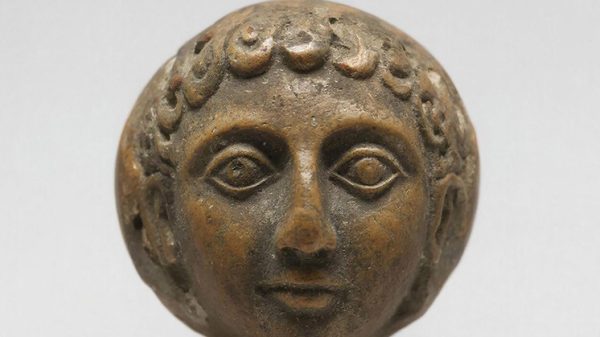Artifacts may revolutionize the history of religions
Byzantine-era coin weights recently discovered in the ruins of a Jerusalem sanctuary are of the type used in 6th-century church rituals. According to archaeologists, this proves that Christians were present in those distant times on the Temple Mount in the holy city of three world religions.

Two newly discovered Byzantine-era coin weights indicate a Christian presence on the Temple Mount before the Muslim conquest of Jerusalem and may even point to an early church there, according to a recent paper by archaeologists involved in the Sifting the Temple Mount project.
Since 2004, scientists have been uncovering artifacts by methodically sifting through tons of dirt and debris removed from the Temple Mount and dumped haphazardly outside the walls of the Old City by the Muslim Waqf Authority during a 1999 construction project.
The small artifacts, one made of glass and the other of brass, weigh just 0.6 grams. Analysis shows that they were probably official imperial weights, which, according to sixth-century Byzantine law, were required to be present in large churches.
As part of the «Sifting» project Already, «many artifacts have been discovered that can be attributed to the Byzantine era, including objects directly associated with churches, which, together with recently discovered weights, suggest that there may even have been a Byzantine church on the Temple Mount,» — states in an article published in the Israel Numismatic Research Journal.
The Temple Mount, the holiest site in the Jewish religion, was the site of the first and second biblical temples. The location of the “hot spot” in the Old City of Jerusalem is considered the third most important site in Islam after Mecca and Medina, where the Dome of the Rock and Al-Aqsa Mosque, sacred to Muslims, are located.
The presence of Christians on the Temple Mount has not been the focus of historians and has been downplayed by authorities. Over the years, the project has uncovered many fancy floor tiles from the Byzantine period that were only used in monumental buildings. Also discovered were fragments of altar screens, which are an element of early church architecture, and many mosaic stones from the Byzantine era, which means someone invested a lot in the flooring, according to an expert on ancient coinage and a doctoral student in archeology at Bar-Ilan University Shaham. He says that the newly discovered weights may also be connected to the church.
«We have all this Byzantine material that shows that something was happening, but ten years ago everyone agreed on It is believed that the Temple Mount was abandoned during the Byzantine period. But in fact, a lot happened during the Byzantine era, and from what we have found out, it can be conveniently associated with the church,” — says the specialist.
Shaham stressed that the idea of a pre-Islamic church on the site is not entirely uncontroversial, but “a convincing explanation needs to be given for why the scales are there.” Similar scales were found in another Byzantine church, at Sussit in the Golan Heights, so «the idea of official scales within the Byzantine church was already established in the Levant.»
The glass weight depicts “an imperial bust in a halo above a cross-shaped monogram, surrounded by two smaller busts,” the authors report. The artifact bears a monogram with the inscription “Euthalios,” which means “a high-ranking Byzantine official under whose leadership the weights were made.” These weights were probably made in and distributed from a central official workshop in Constantinople between 550-650 AD.
The second weight, made of brass alloy, has a square shape. The weight is decorated with elegant silver inlay with the Greek letters kappa and delta, which archaeologists interpret as denoting a weight equal to 4 keratins or carats. Such square weights were primarily made in the 5th and 6th centuries AD.
The small size and precise weight of both artifacts make them extremely rare, the authors say.
The young Islamic empire retook Jerusalem in 638 AD among the Byzantine Christians of the Eastern Roman Empire. Muslim chronicles from the time emphasize that the Temple Mount was abandoned before the Dome of the Rock was built on the site.
«Based on this, historians have suggested that the Temple Mount was a landfill, but this may be the case “When history is written by the winners,” — noted Bar-Ilan Shaham. Another hypothesis regarding the artifacts, he said, is that the Byzantine building on the Temple Mount had already been destroyed by the Persian Sassanid Empire, whose brief control of Jerusalem in 614-630 AD led to great chaos in the city.























































Свежие комментарии